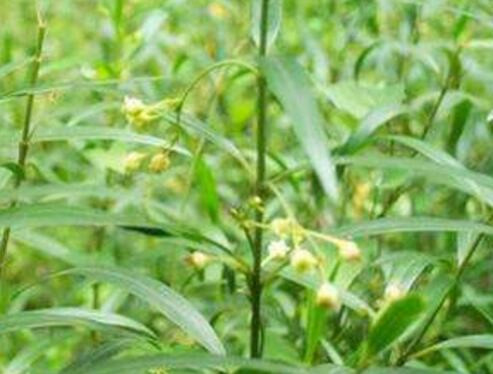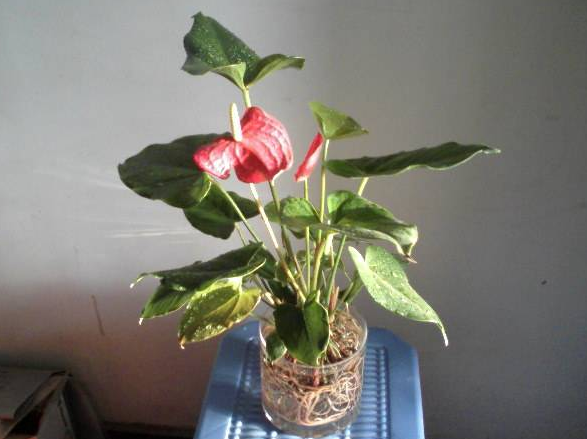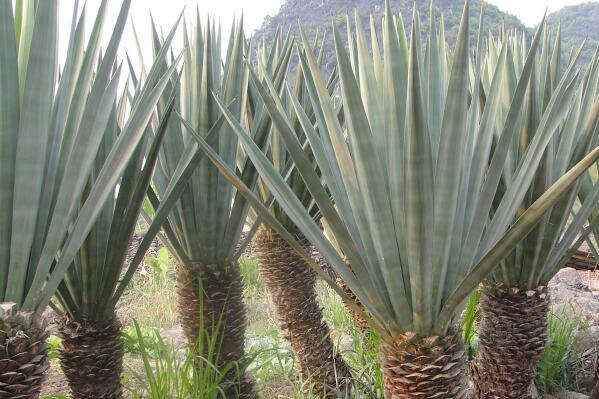(medicinal plants) how much is the price of Xu Changqing per jin? How to plant it? What are the effects and effects?
Xu Changqing is distributed in Heilongjiang, Jilin, Liaoning, Hebei, Henan, Shandong, Inner Mongolia, Jiangsu, Zhejiang, Jiangxi, Fujian, Hubei, Hunan, Guangdong and other places. It has high medicinal value. So, how much is the price of Xu Changqing per jin? How to plant it? What are the effects and effects? It is understood that the price of Xu Changqing is more than ten or twenty yuan per jin, and the price will be different in different regions.

How does Xu Changqing plant it?
Land selection and land preparation
It is better to choose sandy loam soil with deep soil layer and good drainage on the edge of forest or ditch, which is slightly wet and humic. 2 kilograms of fully mature farm manure was applied every 667 meters. Add 30kg of calcium superphosphate as base fertilizer and turn it about 30cm deep. Flatten and rake fine. Make a border about 20 centimeters high and 1.3 meters wide, with turtles on their backs and drains all around.
Mode of reproduction
Seed propagation or ramet propagation can be used in production.
Seed propagation
The sowing date is in the first and middle of April. Mix the seeds with plant ash and sow them in trenches with a spacing of 15 cm. The depth of the ditch is 1 cm to 2 cm. After sowing, cover with fine soil, cover with thin thatch, water and keep moist. Remove the cover grass when the seedling emerges about 2 weeks later. The seedlings are transplanted when they are about 10 cm high. The sowing rate is 21.0-2.5 kg per 667 m.
Seedling raising and transplanting
Select mature, full seeds with a germination rate of more than 85% that are more than 2 years old. Sowing from February to April in spring, the seeds were mixed well with plant ash or fine sand, scattered evenly into the sowing ditch about the depth of 2cm, sprinkled with a layer of plant ash or humus soil, then covered with grass to keep moisture, and the row spacing was 12~15cm. The seedlings emerged in about 15 days, and the cover grass was removed in time after emergence. Through a series of management such as seedling intercropping, seedling setting, soil loosening, topdressing and weeding, seed roots were carefully picked and planted according to row spacing 20~25cm and plant spacing 10~12cm, and watered immediately after transplanting from seedling falling in winter to seedling germination in the second spring. By using this method of propagation, the sowing amount per mu is controlled at 1.5~2.5kg, and the seedlings (roots) can be planted in about 10 mu of field.
Ramet propagation
Dig out Xu Changqing's underground rhizome in late autumn or early spring, select the plants with strong rhizome, color, dense nodes and no diseases and insect pests, cut off the excessively long fibrous roots for medicinal use, retain the roots about 5cm, and then cut the rhizomes according to the number of teeth, and divide the mother into several plants, each guaranteed to have 1 or 2 teeth. The planting method is the same as seedling transplanting.
Field management
Inter-seedling fixed seedling
Seedling height 5cm starts seedlings, 7~8cm sets seedlings, plant spacing 5~6cm, row spacing 15cm. The principle of keeping seedlings is to get rid of the plants that are too small or too large, and keep the plants that are relatively the same size. It is found that when there is a lack of seedlings and broken ridges, the seedlings can be transferred to supplement the seedlings.
Intermediate ploughing and weeding
Xu Changqing grows slowly at seedling stage, and the border surface is easy to breed weeds, so weeding should be carried out for 2 or 3 times in combination with middle tillage. Weeds are pulled out artificially after ridge sealing and during the seedling or growing period.
Cultivate soil and choke root
When the seedling is about 20 centimeters high. Proper cultivation of choked roots can promote the growth of underground parts and increase the yield. The specific method is to mix livestock dung with burning soil or other soil without weed seeds and cover the border surface with a thickness of no more than 3 cm.
Topdressing
After topdressing the seedlings in time, 5kg and urea could be dissolved in 1000~1500kg water and irrigated on the roots of the plants; before the rainy season came in the middle of June, high-quality three-element compound fertilizer 20~30kg was applied per mu, shallow trenches were opened between rows and soil was covered after application. You can spread some plant ash to increase potassium supply and promote the growth of underground parts. Topdressing was applied once every one month or so, for a total of three times, and the fertilizer was mainly into animal manure.
Drainage and irrigation
Attention should be paid to spraying water after seed germination and before emergence to keep the soil surface moisture moderate and improve the seedling emergence rate. Irrigation should be carried out in time in case of drought. The drainage ditch should be dug before the rainy season to ensure that there is no stagnant water in the field after the rain, so as to prevent the water from rotting the roots.
Support anti-lodging
Erect a support with a height of about 1m every 5m along the direction of the border between rows, and connect the support with plastic rope at 25cm, 45cm and 65cm above the ground to prevent Xu Changqing from lodging and reducing production.
Pest control
From May to June, Xu Changqing began to develop root rot, which was more likely to occur due to poor drainage or low-lying terrain. The roots of the diseased plants are black, and the control measures include timely drainage in the rainy season, timely removal of dead plants and disinfection of disease holes with lime, avoiding repeated cropping, and prevention and control with root rot, carbendazim, soil fungus, chlorothalonil or Trichoderma fungi. The main pests harmful to Xu Changqing are aphids and cross bugs, which can be sprayed with 1500 times of omethoate or 20% 50kg per 20mL, once a week for 2 or 3 times in a row.
Harvest and processing
It was harvested after 2-3 years of seed propagation and seedling transplanting, and 1-2 years after ramet propagation. Don't harvest the aboveground and underground parts of Xu Changqing in autumn and spring. After harvest to clean the soil, impurities, sun to semi-dry, tie into a small handful, and then dry or shade dry. After drying, the upper part is grayish green and the underground part is dark brown. It is better to be dry, hypertrophic, positive color, no impurities and strong smell.
What are the effects and functions of Xu Changqing?
1. For rheumatism arthralgia, low back pain, fall injury pain, epigastric pain, toothache and other pain. Xu Changqing has a good effect of dispelling wind and relieving pain. it is widely used in all kinds of pain caused by rheumatism, cold coagulation, qi stagnation and blood stasis. It is also used for postoperative pain and cancer pain, and has a certain analgesic effect. Can be used alone, or with the card compatibility of related drugs.
two。 Use eczema, rubella, ringworm and other skin diseases. Xu Changqing has the effect of dispelling wind and relieving itching. Can be used only for internal use or decoction for external washing, can also be compatible with Sophora flavescens, Fructus Sophorae, fresh skin and other clear damp-heat drugs. In addition, Xu Changqing can also cure snake venom and snakebite. It can be used for internal or external use with half lotus.
Time: 2019-03-19 Click:
- Prev

Can evergreen be hydroponically cultivated? How is hydroponic culture better?
Now, water-raised potted plants have gradually become a trend. has this water-raised wind blown to your home? The common cultivation method of evergreen is soil. Can evergreen be hydroponically cultivated? From an environmental point of view, the roots of hydroponic plants are less likely to breed bacteria than soil-cultured plants, and they look more pleasing to the eye.
- Next

How much does a small seedling of asparagus branch sisal cost? How much do you earn by planting an acre? What are the technologies?
Sisal, also known as pineapple hemp, agave family agave, is a perennial tropical hard leaf fiber crop, is the world's largest consumption, the widest range of a hard fiber. So how much does a sisal seedling cost? How much do you earn by planting an acre? What are the technologies? How much does a small plant cost?
Related
- Fuxing push coffee new agricultural production and marketing class: lack of small-scale processing plants
- Jujube rice field leisure farm deep ploughing Yilan for five years to create a space for organic food and play
- Nongyu Farm-A trial of organic papaya for brave women with advanced technology
- Four points for attention in the prevention and control of diseases and insect pests of edible fungi
- How to add nutrient solution to Edible Fungi
- Is there any good way to control edible fungus mites?
- Open Inoculation Technology of Edible Fungi
- Is there any clever way to use fertilizer for edible fungus in winter?
- What agents are used to kill the pathogens of edible fungi in the mushroom shed?
- Rapid drying of Edible Fungi

